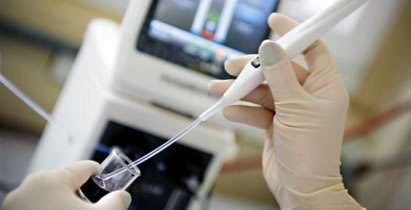A.-M.-PIAGET 50 · CP 979
CH-2301 LA CHAUX-DE-FONDS
Tél. + 41 (0)32 967 80 00
contact(at)laboratoiredubois.ch

Determining the fineness of gold coatings
Among the various quantitative tests performed at Laboratoire Dubois, the determination of the fineness of gold coatingsinvolves some interesting particularities. This is a field governed on the one hand by regulatory aspects specific to each country. On the other hand, it is applicable to two specific luxury market segments, i.e. watch exteriors and jewellery. The substrates are usually either made from brass or stainless steel.
To be considered a gold-plated item under Swiss law, a gold coating must have a deposit at least 5 microns thick. In France the minimum thickness is 5 microns for watches, and 3 microns for jewellery.
Standard ISO 3160-2 describes the methods for determining the gold fineness. As a reminder, for gold alloys, the gold content is defined in thousandths, or according to the old system still commonly used in watchmaking, in carats. One carat represent 1/24 of the total mass, see table below.

The so-called reference method for determining the gold coating fineness is cupellation. This requires prior chemical dissolution of the substrate, usually made from brass or stainless steel. Depending on the dissolving conditions, there is a high risk of also dissolving certain elements of the gold alloy coating. In this case, the solid residue or "shell" is said to be "refined", giving a gold fineness value greater than is actually the case. In addition, this technique is not usable on the full range of gold finenesses, but is limited for coatings with fineness greater than 585/1000.
Laboratoire Dubois has developed its own procedure for determining the fineness of gold coatings on a stainless steel substrate. It tackles the problem the other way round, by dissolving the gold coating, and then assaying the gold content by atomic absorption for example. This technique prevents the risk of error presented by the usual method, by ensuring selectivity in the coating dissolution, without dissolving the constituent elements of the substrate. In addition, we can note that the procedure developed makes it possible to determine the fineness throughout the entire composition range.




